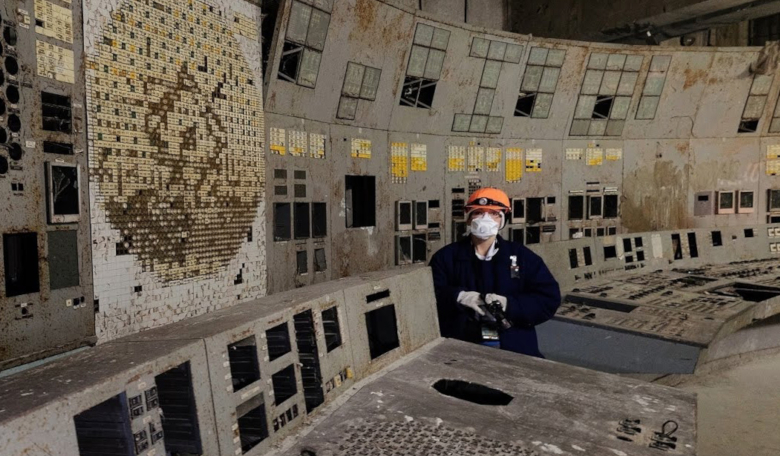Being an astronaut certainly has its high points, but with that unrivalled opportunity to venture out into space comes an inherent risk faced by those travelling outside the protective cocoon of the Earth’s atmosphere; the ubiquitous presence of radiation that can cause all kinds of unpleasantness from damaging cells or DNA to an increased risk of getting cancer later in life.
Finding a way to shield astronauts from the damaging effects of space radiation, not just those stationed on the International Space Station (ISS), but also for those with grand plans to colonise other worlds, is therefore a top priority.
Thankfully for those faced with a constant bombardment of space radiation, this problem might have just been solved, at least partially, as a team of US scientists have proposed a novel way to potentially mitigate against the dangers; coating surfaces in a radiation-absorbing fungus found at the Chernobyl nuclear reactor nearly three decades ago.
Radiation comes in two types; either non-ionising (low energy) or ionising (high energy). Ionising radiation consists of particles that have enough energy to completely remove an electron from its orbit around an atom or molecule, thus creating a more positively charged atom.
Less energetic, non-ionising radiation on the other hand does not have enough energy to remove electrons from the material it hits.
Space radiation is of the first kind, the harsh kind and astronauts face being exposed to ionising radiation that is the equivalent of 150 to 6,000 chest x-rays, depending on their length of stay in space.
Scientists have found though that certain fungi thrive in high-radiation environments on and around Earth, like those of the failed Russian nuclear plant that suffered a meltdown in the 80s and on the exteriors of spacecraft in low-Earth orbit, where ionising radiation is also high.
How do these radiation-loving organisms survive? The fungus is packed with large amounts of the pigment melanin, which is found – among many places – in the skin of humans.
In a similar way to photosynthesis, the organisms appear to undergo radiosynthesis, meaning that instead of using sunlight to convert carbon dioxide and water into an energy source for food they use melanin to convert gamma-radiation into chemical energy instead.
This has led to the realisation that these organisms could be used as a radiation shield to protect other lifeforms.
Whats more, fungus is small and light and being a living organism, it could, if conditions were right, be grown were it needs to be used. This would eliminate many costs associated with shipping materials from Earth.
It sounds like a win-win situation, so to test out its viability as a biological guard, a batch of the fungi was sent to the ISS for 30 days to see how it coped with swallowing up an onslaught of harmful ionising gamma radiation.
The team, whose lead author on a recent paper submitted to a biology preprint server (meaning it has yet to undergo peer review by other scientists) is Graham Shunk at the North Carolina School of Science and Mathematics, used a particular type of fungus known as Cladosporium sphaerospermum, or C. sphaerospermum.
Results from the study indicated that a layer of the fungus only 2 millimeters thick absorbed almost 2 percent of the cosmic radiation during its month stay in the off-world laboratory.
Extrapolating from this positive result, the team estimated that for would-be colonisers on the surface of Mars, a 21 centimetre thick layer of Cladosporium sphaerospermum would be needed to countermand the effects of harmful radiation hitting the Red Planet.
However, if you combined the fungus with other in situ resources such as martian regolith, then a thinner layer of the black mould would suffice, say Shunk and colleagues.
“Through the design of a subtle yet simple experimental setup, implemented as a small single payload, it could be shown that the melanized fungus C. sphaerospermum can be cultivated in LEO, while subject to the unique microgravity and radiation environment of the ISS,” write the authors in their paper.
“Growth characteristics further suggested that the fungus not only adapts to but thrives on and shields against space radiation, in accordance with analogous Earth-based studies,” they add.
The project, which was funded through the ‘Go For Launch!’ programme, will need further work to ensure the mould’s suitability as a bioshield but so far the data looks positive and one day the fungus could prove to be “invaluable in providing adequate protection for explorers on future missions to the Moon, Mars and beyond,” conclude the team.











